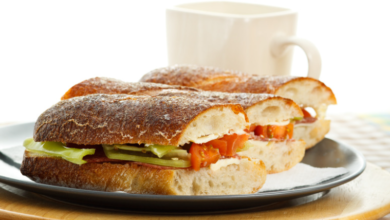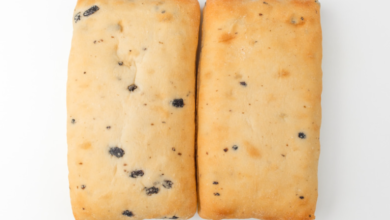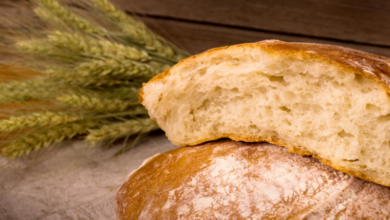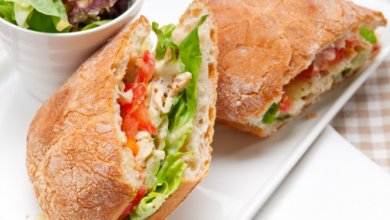Is Ciabatta Easy To Make? Let’s Find Out!

What To Know
- Successfully making ciabatta at home is a testament to your culinary skills and a source of immense satisfaction.
- Whether you are a seasoned baker or a novice enthusiast, the question of is ciabatta hard or easy to make is a matter of perspective.
- With determination and a willingness to learn, you can unlock the secrets of ciabatta creation and experience the joy of crafting this culinary masterpiece in your own kitchen.
The world of breadmaking is vast and diverse, with countless varieties that tantalize our taste buds. Among these culinary wonders, ciabatta stands out as a unique and beloved Italian bread. But when it comes to making ciabatta at home, a question often arises: is ciabatta hard or easy to make? In this comprehensive guide, we will delve into the intricacies of ciabatta creation, exploring the challenges and rewards of this captivating culinary endeavor.
Understanding Ciabatta
Ciabatta, meaning “slipper” in Italian, is a rustic Italian bread characterized by its large, irregular holes and crisp crust. Its distinct texture and flavor profile make it a favorite among bread enthusiasts. However, the process of making ciabatta can seem daunting, especially for novice bakers.
The Challenge of Ciabatta
Ciabatta presents several challenges that can test the patience and skills of even experienced bakers.
1. High Hydration: Ciabatta dough has a high hydration level, meaning it contains a significant amount of water. This makes the dough very wet and sticky, which can be difficult to handle.
2. Long Fermentation: Ciabatta requires a long fermentation process, which allows the dough to develop its characteristic flavor and texture. However, this lengthy process can be time-consuming and requires careful attention to temperature and timing.
3. Shaping and Baking: Shaping ciabatta dough can be tricky due to its wetness. Additionally, baking ciabatta requires a specific technique to achieve its signature crust and airy interior.
The Rewards of Ciabatta
Despite the challenges, making ciabatta at home can be incredibly rewarding.
1. Unique Flavor and Texture: Ciabatta’s distinctive flavor and texture make it a culinary delight that is hard to replicate. Its crunchy crust and airy interior create a sensory experience that is both satisfying and memorable.
2. Versatility: Ciabatta is a versatile bread that can be enjoyed in various ways. It is perfect for sandwiches, bruschetta, or simply served with olive oil and balsamic vinegar.
3. Sense of Accomplishment: Successfully making ciabatta at home is a testament to your culinary skills and a source of immense satisfaction.
Is Ciabatta Hard or Easy to Make?
So, is ciabatta hard or easy to make? The answer lies in your level of experience and commitment. For novice bakers, ciabatta can be a challenging but rewarding endeavor. With practice and patience, you can master the art of ciabatta creation. However, if you are short on time or lack the necessary skills, it may be wiser to purchase ciabatta from a bakery.
Tips for Making Ciabatta
If you are determined to make ciabatta at home, here are some tips to help you succeed:
1. Use High-Quality Ingredients: Start with the best ingredients you can find, including high-quality flour, yeast, and water.
2. Follow the Recipe Carefully: Don’t deviate from the recipe unless you have a thorough understanding of breadmaking.
3. Be Patient: Ciabatta requires time and patience. Allow the dough to ferment and rise properly.
4. Handle the Dough Gently: Ciabatta dough is delicate. Be careful not to overwork or tear it.
5. Bake at the Right Temperature: The baking temperature is crucial for achieving the perfect crust and interior.
6. Cool Thoroughly: Let the ciabatta cool completely before slicing and serving.
Troubleshooting Ciabatta Problems
If you encounter problems while making ciabatta, here are some troubleshooting tips:
1. Dense Loaf: The dough may have been over-fermented or under-baked.
2. Burnt Crust: The oven temperature may have been too high.
3. Soggy Interior: The dough may have been under-fermented or baked at too low a temperature.
4. Sticky Dough: The dough may have been over-hydrated.
5. Difficult to Shape: The dough may have been under-fermented.
The Bottom Line: Embracing the Ciabatta Challenge
Whether you are a seasoned baker or a novice enthusiast, the question of is ciabatta hard or easy to make is a matter of perspective. With determination and a willingness to learn, you can unlock the secrets of ciabatta creation and experience the joy of crafting this culinary masterpiece in your own kitchen. So, embrace the challenge, gather your ingredients, and embark on a delicious journey of breadmaking.
Popular Questions
1. What is the difference between ciabatta and sourdough bread?
Ciabatta is made with a high hydration dough and a long fermentation process, while sourdough bread is made with a sourdough starter and a shorter fermentation time. Ciabatta has a crispy crust and a chewy interior, while sourdough bread has a tangy flavor and a denser texture.
2. How do I store ciabatta?
Ciabatta is best stored at room temperature in a bread box or wrapped in a clean cloth. It can be kept for up to 3 days.
3. Can I freeze ciabatta?
Yes, ciabatta can be frozen for up to 3 months. To freeze, wrap the ciabatta tightly in plastic wrap and place it in a freezer-safe bag. To thaw, remove the ciabatta from the freezer and let it thaw at room temperature for several hours.





